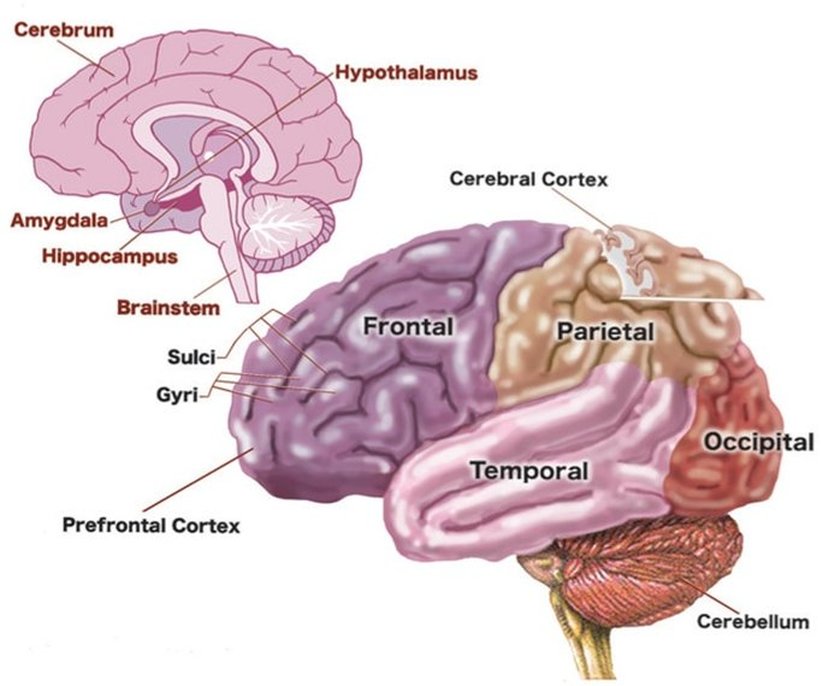The Brain |
Page 8 |
The next portion of this training is going to explain brain development but in order to truly understand how ACEs and brain development are related it is important to have a basic understanding of the way the brain works.
Often the brain’s systems are referred to as areas that regulate certain kinds of information such as emotions or breathing. This isn’t completely untrue, however, it is important to keep a flexible frame of mind when it comes to these active areas. Often, several areas of the brain influence others.
There are three basic parts of the brain:
- the brain stem
- cerebrum
- the folds of the cerebral cortex which give the brain its famous wavy appearance
The brain stem is at the base of the brain and connects the brain to the spinal column. This area is responsible for things such as breathing, heart rate, and reflexes. Next, we have the cerebrum which is tucked just behind the brain stem. The cerebrum controls balance and coordination for the most part.
Next is the cerebral cortex which begins to develop its signature appearance during prenatal development. The folds (called sulci and gyri) of the cerebral cortex allow more “brain” to fit inside of the skull. The pattern and placement of the sulci and gyri are basically the same in each human which allows scientists to map the areas of the brain. From here they are divided up into areas based on understood function and purpose.
Source: Adapted by Bill Day from www.educarer.org, 2006
Source: Adapted by Bill Day from www.educarer.org, 2006


